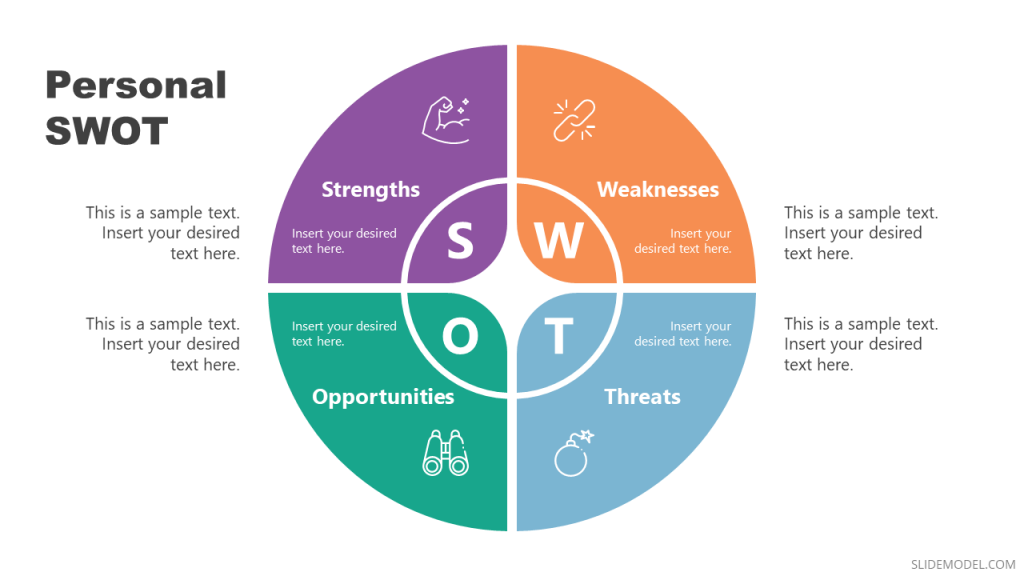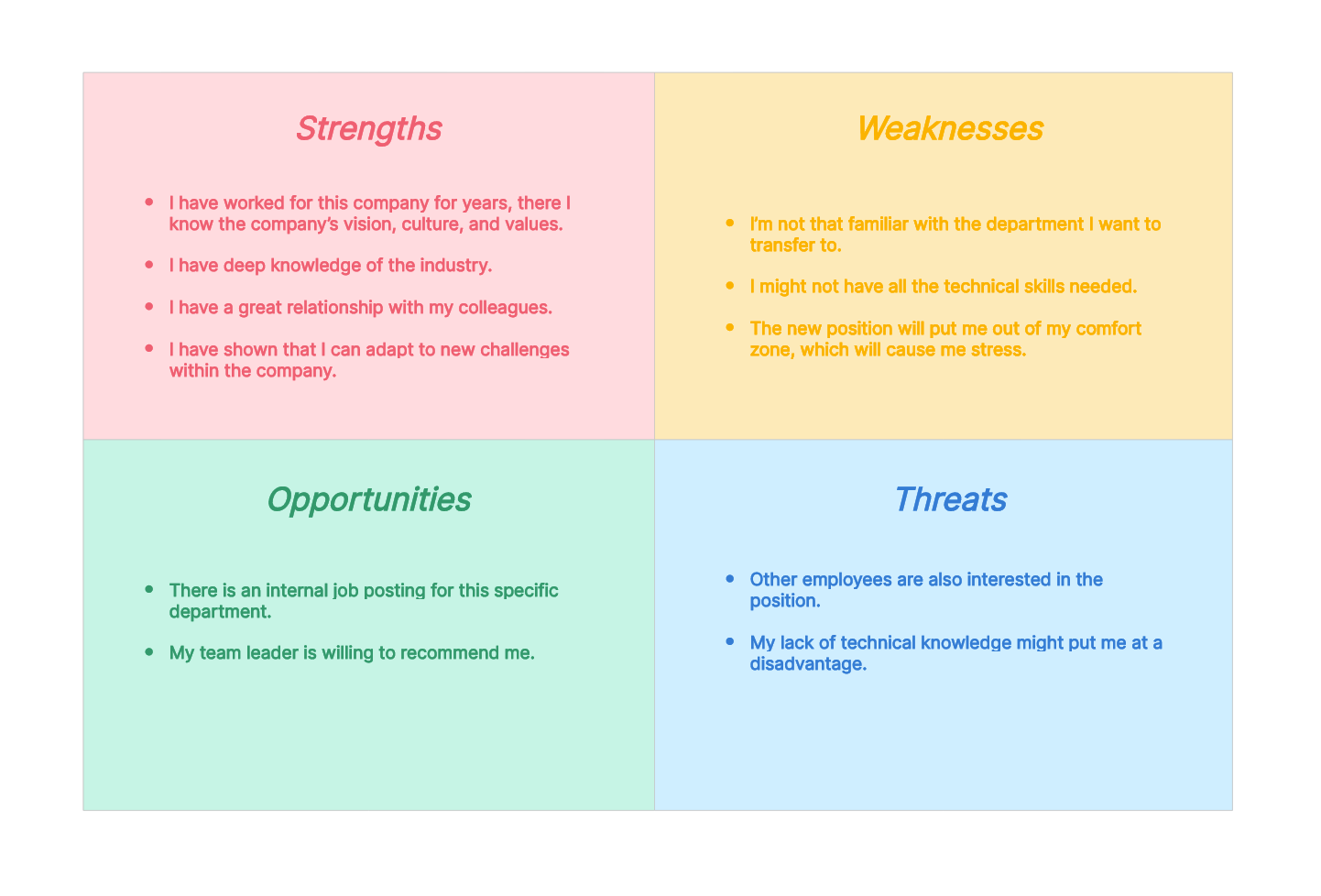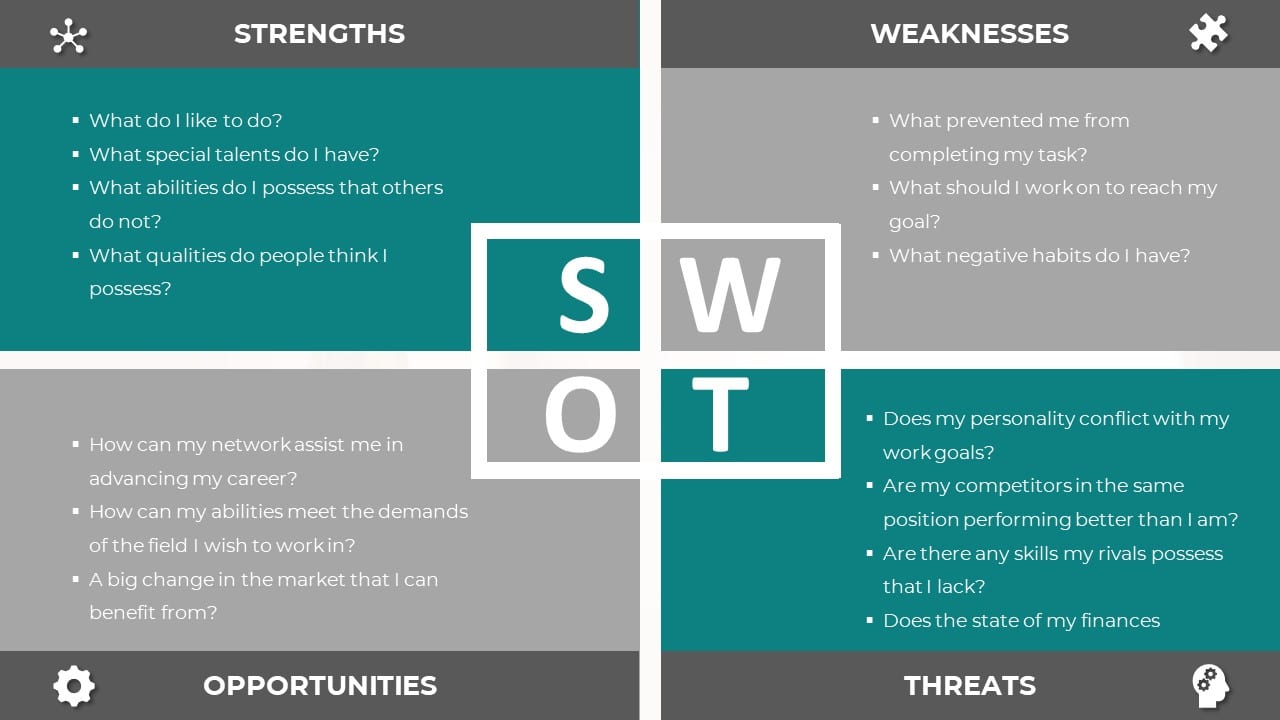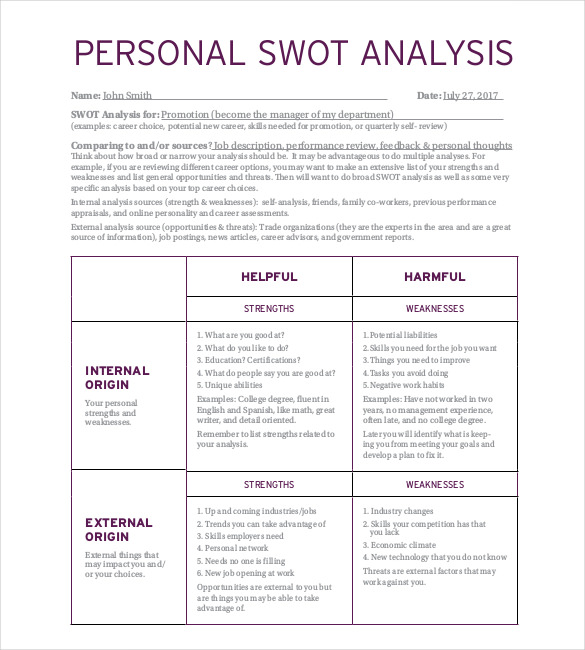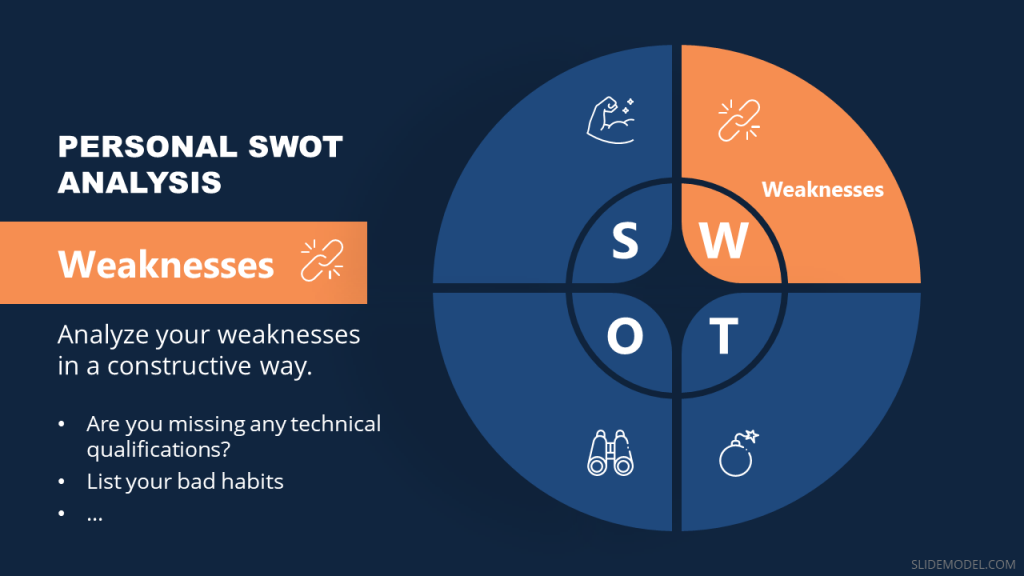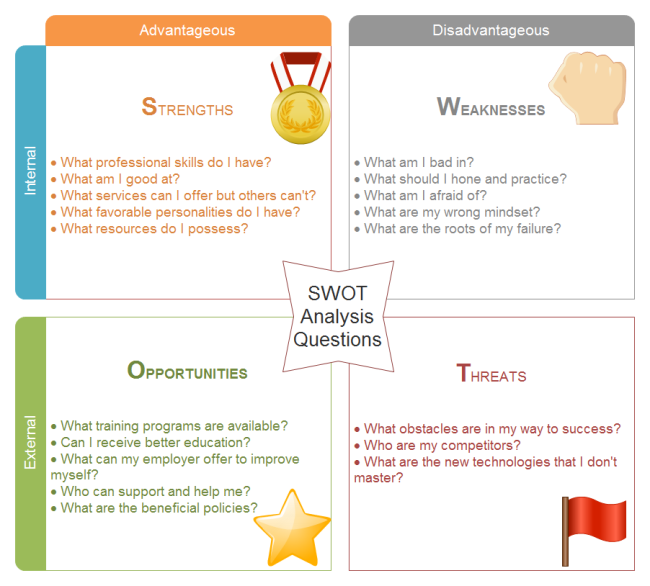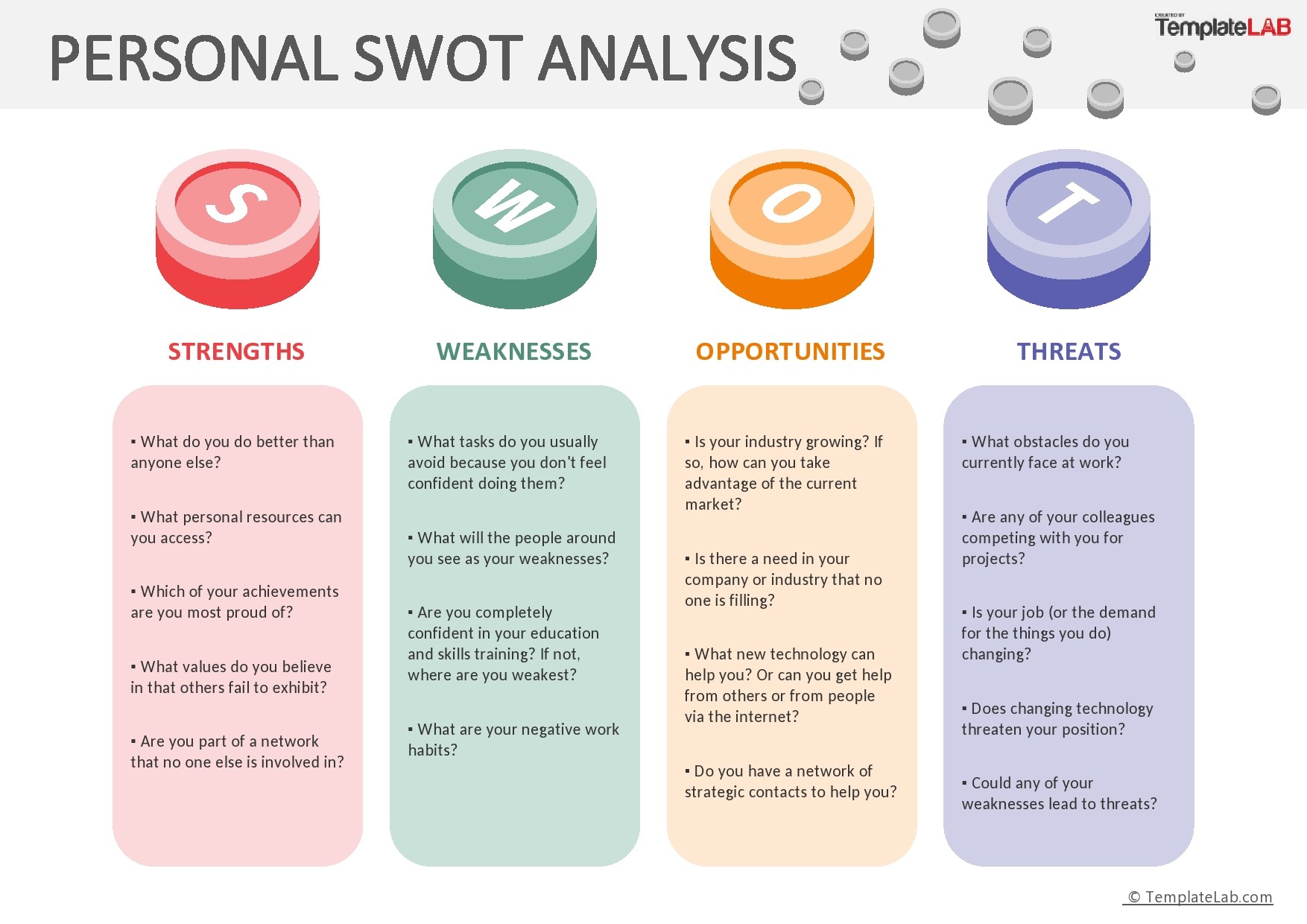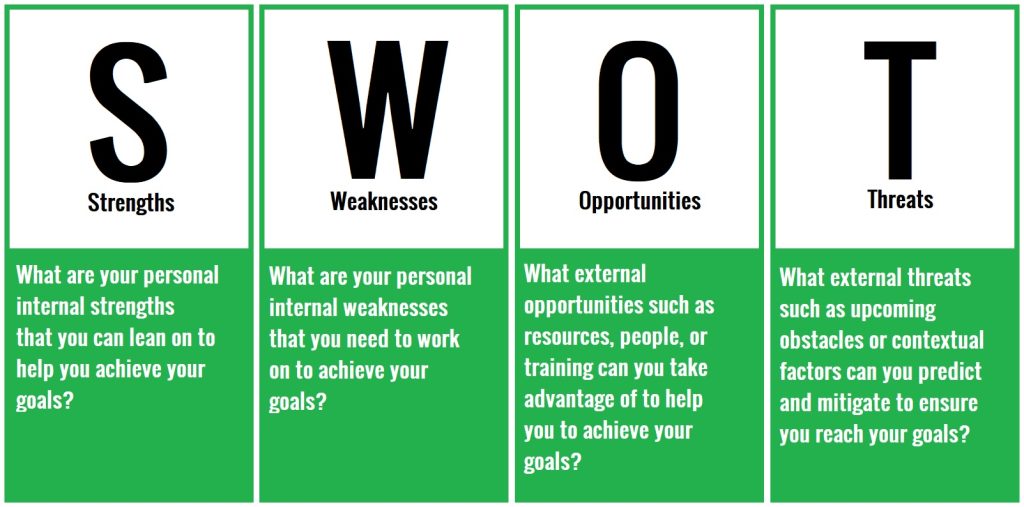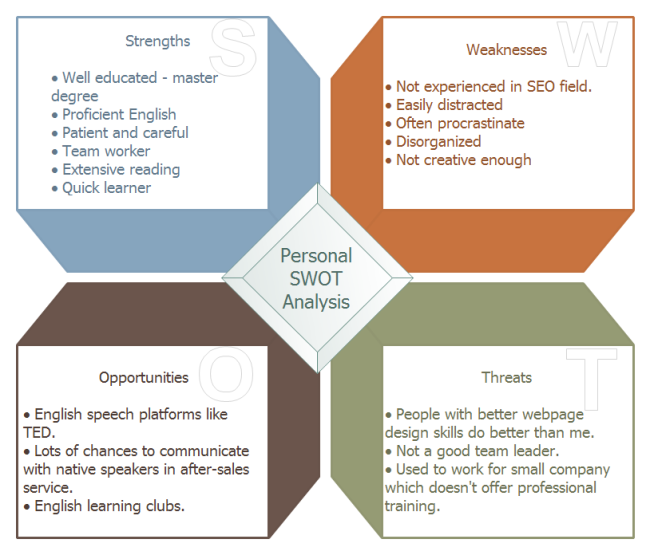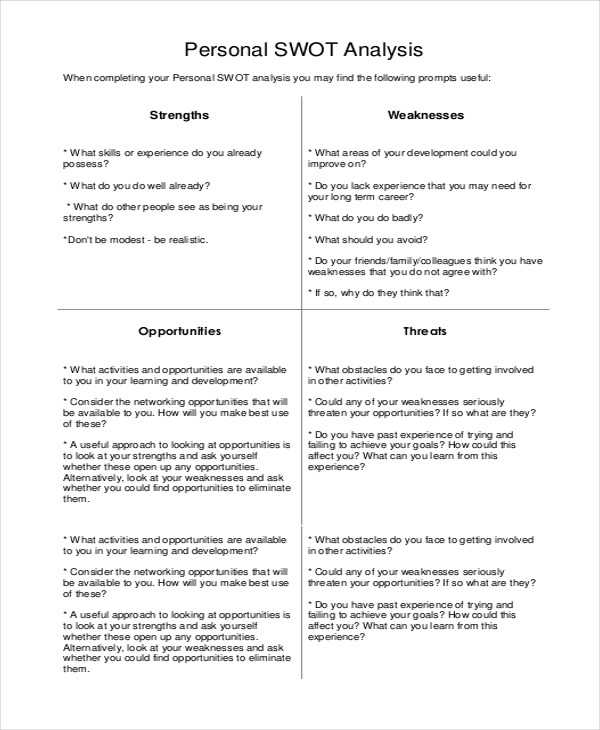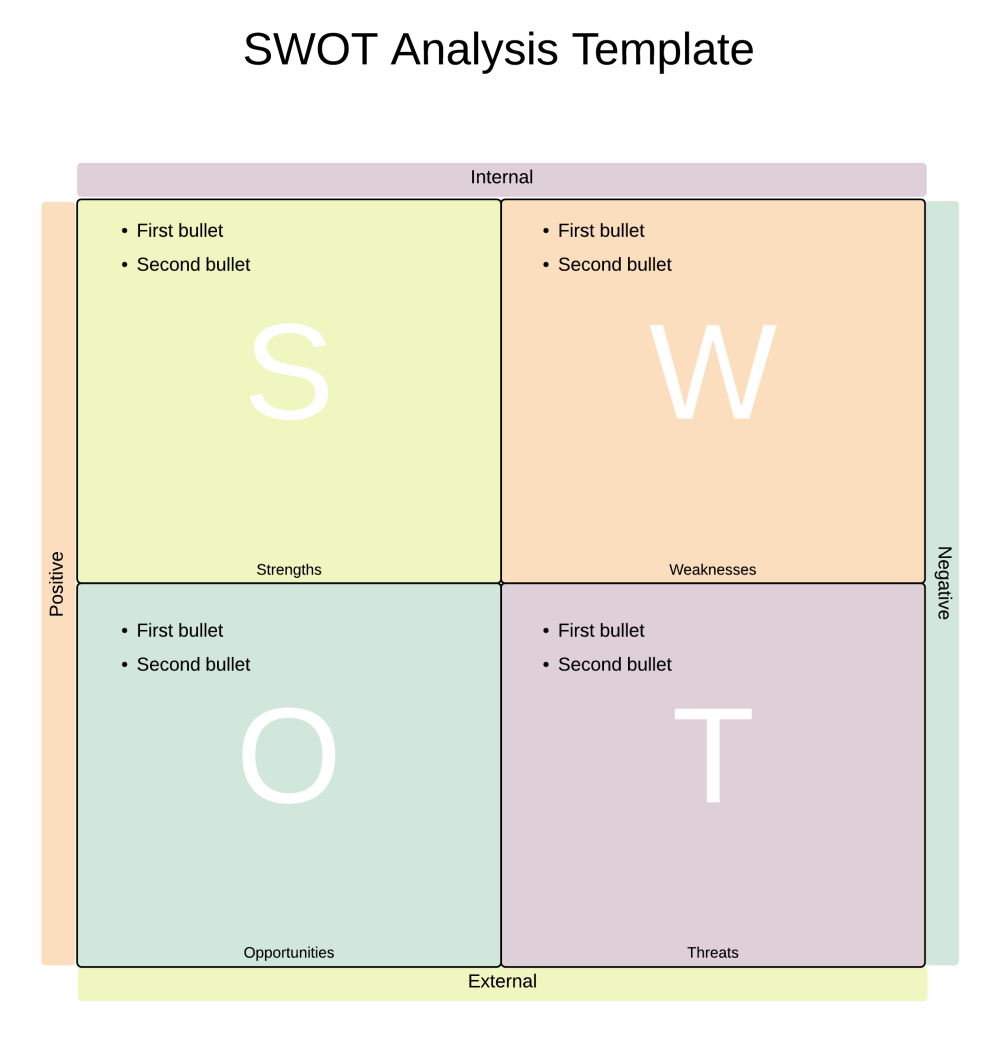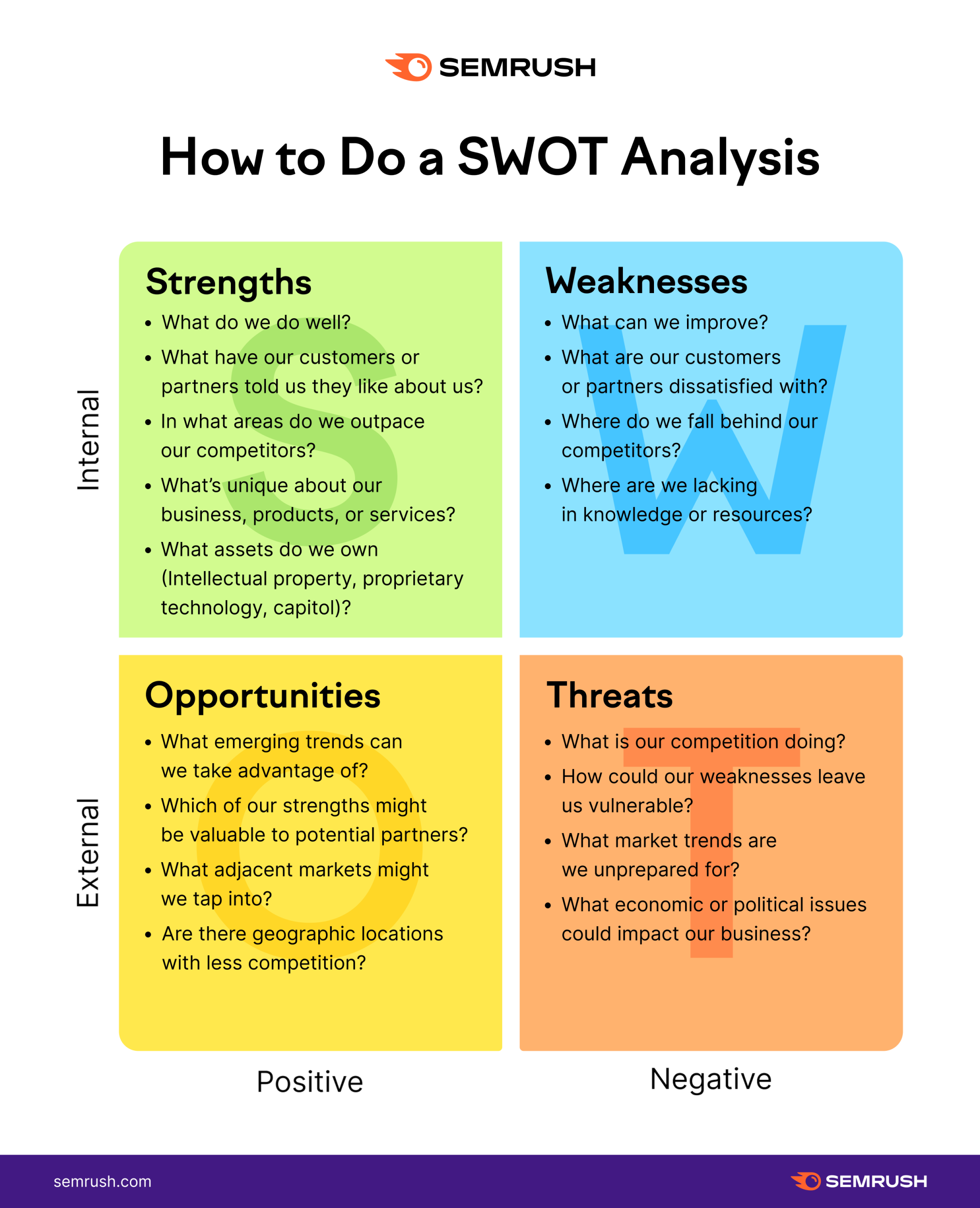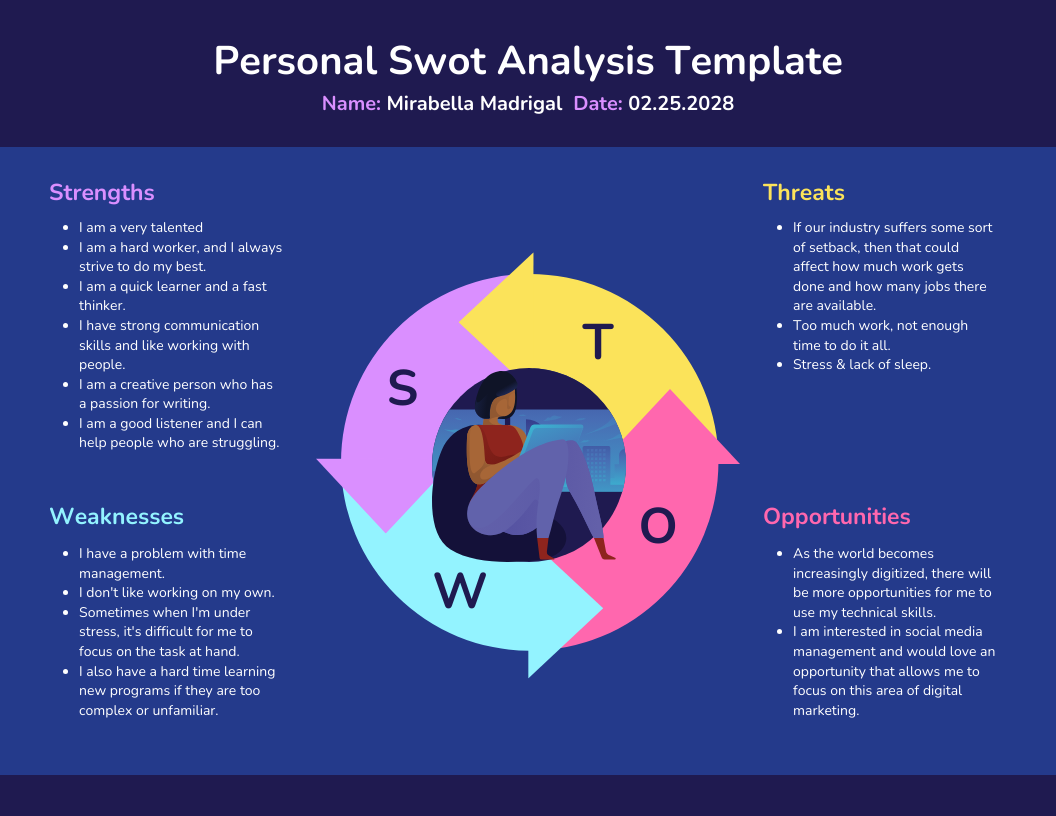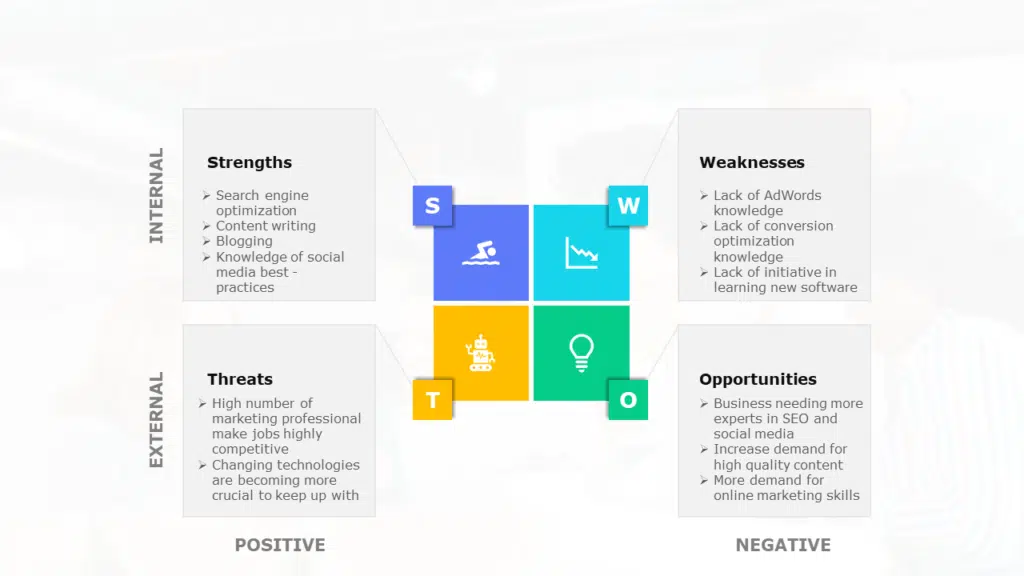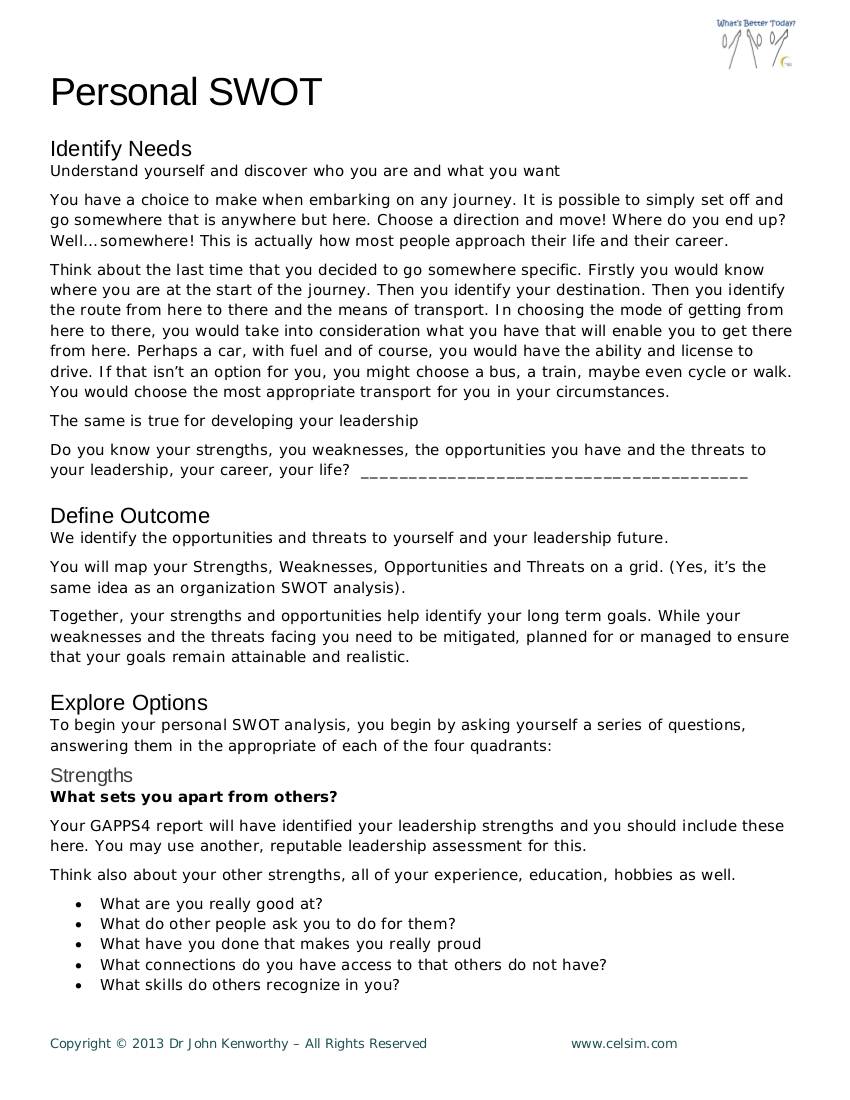Example Of A Personal Swot Analysis

In today's fast-paced world, self-awareness is increasingly recognized as a crucial ingredient for personal and professional success. Individuals are actively seeking methods to better understand their strengths, weaknesses, opportunities, and threats to navigate their careers and personal development more effectively.
One technique gaining traction is the SWOT analysis, traditionally used in business strategy, but now being applied on a personal level. This framework allows individuals to conduct an internal and external assessment of themselves, providing a structured approach to self-improvement.
The SWOT analysis is a simple yet powerful framework. It's a strategic planning tool used to evaluate the Strengths, Weaknesses, Opportunities, and Threats involved in a project or in this case, a person's life.
An Example of a Personal SWOT Analysis
Let's consider the case of *Emily Carter*, a recent college graduate seeking to transition into a career in marketing.
To clarify her goals and the best path to achieve those goals, Emily undertook a personal SWOT analysis. This process enabled her to gain insights into her own capabilities and external factors that may affect her chances of landing her dream job.
Strengths
Emily identified her strengths as strong communication skills, both written and verbal. She also noted her proficiency in social media marketing, built through internships and personal projects. Her academic record as a Dean’s list student further solidified her confidence.
Weaknesses
However, she acknowledged a lack of experience with data analytics tools. She also felt her networking skills needed improvement, as she found it challenging to connect with industry professionals. Emily was also cognizant that she had limited experience presenting to large groups.
Opportunities
On the opportunities front, Emily recognized the growing demand for digital marketing professionals in her region. She saw potential in attending industry conferences and workshops to expand her network. She realized, furthermore, that online courses could help fill the data analytics gap.
Threats
Emily acknowledged fierce competition from other marketing graduates. She also worried about the economic downturn and the potential for hiring freezes. The fast pace of technological advancements in the marketing field also concerned her because keeping skills current could prove challenging.
Impact and Actionable Insights
By performing this SWOT analysis, *Emily Carter* gained a clearer understanding of her current position.
She saw how to leverage her strengths to stand out to potential employers. She also saw which weaknesses to mitigate through training and practice.
The identified opportunities highlighted avenues for career advancement. She was also prepared for potential threats, enabling her to develop contingency plans.
Following her analysis, Emily enrolled in an online data analytics course. She also set a goal to attend at least two industry networking events per month. Moreover, she began practicing her presentation skills with friends and family.
SWOT analysis empowers individuals to make informed decisions about their career paths. It also shows how they can address personal and professional challenges. By understanding their strengths, weaknesses, and the external environment, individuals can take strategic action to achieve their goals.
The use of a personal SWOT analysis has broader societal implications as well. It encourages continuous self-improvement and adaptability in a rapidly changing world.
This approach can lead to a more skilled and resilient workforce, capable of navigating complex challenges and contributing to innovation and economic growth. The case of *Emily Carter* serves as a practical illustration of how a personal SWOT analysis can be a powerful tool for self-discovery, strategic planning, and ultimately, achieving personal and professional success.
